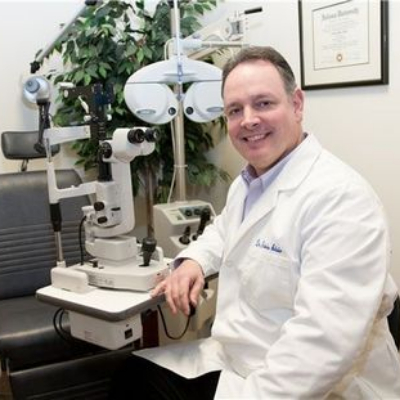Locate a Trusted Optometrist Chino for Household Eye Treatment Solutions
Locate a Trusted Optometrist Chino for Household Eye Treatment Solutions
Blog Article
Checking Out the Latest Technical Innovations in Optometry and What They Mean for Eye Doctors
In the ever-evolving field of optometry, current technological advancements are improving how practitioners come close to eye treatment. From the precision of Optical Comprehensibility Tomography to the nuanced insights used by AI-driven diagnostic devices, these developments are establishing new requirements in client analysis and therapy. Teleoptometry is positioned to redefine availability, making certain that knowledge transcends geographical restrictions. As these advancements penetrate the practice, optometrists are confronted with the challenge of welcoming these tools to improve person results. Yet, the inquiry remains: exactly how will these technical shifts redefine the functions and duties within the occupation?
Developments in Diagnostic Tools
Advancing the field of optometry, advancements in analysis devices have transformed the means eye treatment experts examine and detect aesthetic problems and eye problems. The past decade has seen significant technological developments, allowing more comprehensive and accurate evaluations. Optical Comprehensibility Tomography (OCT), as an example, gives high-resolution cross-sectional photos of the retina, enabling for the early detection of conditions such as glaucoma and age-related macular deterioration. This non-invasive imaging method has become essential in contemporary optometric technique.
Another secret innovation is the intro of innovative corneal topography systems, which map the surface curvature of the cornea with accuracy. These devices are particularly helpful for fitting get in touch with lenses and identifying corneal disorders. Additionally, electronic retinal imaging has actually transformed standard ophthalmoscopy, supplying detailed, scenic sights of the retina that promote comprehensive visual exams.
The development of wavefront aberrometry has actually also been critical, enabling the analysis of refractive errors with unrivaled accuracy (Opticore Optometry). This modern technology aids in tailoring rehabilitative lenses and boosting medical end results for refractive surgeries. Jointly, these diagnostic improvements equip optometrists to provide exceptional client treatment, making certain very early treatment and tailored treatment strategies, ultimately improving aesthetic wellness results
AI in Individual Administration
Building on the structure of sophisticated analysis tools, the incorporation of expert system (AI) in person administration stands for a transformative jump for optometry. AI systems are progressively utilized to enhance performance, accuracy, and personalization in person treatment. By evaluating vast quantities of data, AI can identify patterns and forecast prospective ocular problems, enabling eye doctors to tailor treatments better. This capability is essential in taking care of persistent eye diseases such as glaucoma and diabetic person retinopathy, where early discovery and continuous surveillance are essential.
Moreover, AI-driven systems help with structured person interactions and management procedures. Automated scheduling, online appointments, and customized follow-up strategies not just improve client satisfaction however additionally enhance time monitoring for specialists. These systems can triage people based on the necessity of their problems, ensuring that those in essential need obtain timely interest.
In addition, AI enhances decision-making by giving eye doctors with evidence-based suggestions and therapy pathways. By incorporating data from electronic health and wellness documents, AI devices supply insights that inform medical decisions, minimizing the threat of mistakes and boosting person outcomes. As AI continues to evolve, its role in client administration will likely broaden, reshaping the landscape of optometric care.
Advancements in Retinal Imaging
In the world of optometry, retinal imaging has witnessed impressive technical developments that are enhancing analysis abilities and patient treatment. Developments such as Optical Coherence Tomography (OCT) and fundus digital photography have revolutionized just how optometrists visualize and analyze the retina.
Enhanced imaging methods like OCT angiography are more refining analysis accuracy. This non-invasive method maps blood circulation in the retina, using essential understandings into vascular health and wellness without the need for color injections. Additionally, adaptive optics technology is being incorporated into retinal imaging systems to remedy ocular aberrations, providing unprecedented picture clearness. Such developments help with the recognition of min retinal adjustments that might indicate disease development.
Furthermore, improvements in synthetic intelligence are boosting retinal imaging by enabling automated analysis of big datasets. These systems help eye doctors in identifying patterns indicative of pathology, consequently boosting analysis accuracy and efficiency. Collectively, these advancements are changing retinal imaging right into a keystone of modern-day eye care, improving outcomes and broadening restorative opportunities.
Teleoptometry's Expanding Duty
Teleoptometry is increasingly ending up being a crucial element of eye care, driven by improvements in electronic interaction and analysis devices. As optometry accepts digital change, teleoptometry helps with remote examinations, permitting eye doctors to expand their solutions beyond conventional borders. This is specifically useful in underserved and rural locations where accessibility to specialized eye treatment is frequently limited. By leveraging high-resolution video conferencing and advanced retinal imaging, optometrists can carry out extensive eye exams from afar, ensuring prompt medical diagnosis and treatment.
The integration of expert system (AI) more improves teleoptometry, enabling the evaluation of aesthetic data and assisting in the discovery of ocular conditions such as glaucoma and diabetic retinopathy. AI-powered formulas can quickly interpret intricate imaging information, offering optometrists with valuable understandings that reinforce clinical decision-making.
Additionally, teleoptometry supports connection of care with smooth combination with digital health and wellness documents (EHRs), enabling optometrists to preserve extensive person backgrounds. When seeking advice from with various practitioners., this makes sure that people receive constant and tailored treatment also.
Despite these advantages, obstacles continue to be, including guaranteeing information security and managing client assumptions. However, teleoptometry Read Full Report stands for a significant stride towards more available, effective, and patient-centered eye treatment. As technology evolves, its role is poised to broaden additionally.

Future Trends in Eye Care
A myriad of innovative fads is readied to reshape the future of eye care, driven by technological advancements and the evolving demands of people. One considerable fad is the integration of fabricated knowledge (AI) in diagnostics, which guarantees to boost the accuracy and effectiveness of eye assessments. AI algorithms can analyze vast quantities of data from retinal images, possibly identifying conditions like diabetic retinopathy and glaucoma earlier than typical techniques.
Furthermore, personalized medication is getting traction in optometry, with hereditary testing educating personalized treatment strategies. This method intends to enhance patient end results by tailoring interventions to specific genetic accounts. Wearable innovation, such as smart call lenses, is also imminent, providing real-time surveillance of intraocular stress or glucose degrees, therefore offering continuous understandings into ocular and systemic health.
The fostering of augmented fact (AR) and online reality (VIRTUAL see this REALITY) in training and patient education and learning is another emerging fad. These modern technologies use immersive experiences that can boost understanding and skills both for eye doctors and patients. As these trends develop, eye doctors have to stay abreast of technological developments to provide sophisticated care, making sure better patient results and satisfaction in the dynamic landscape of eye care.
Final Thought

Collectively, these analysis improvements equip optometrists to deliver premium person care, guaranteeing very my website early intervention and tailored therapy strategies, inevitably enhancing visual wellness results.

As these modern technologies continue to advance, optometrists need to adjust and include them into practice, eventually maximizing process performance and raising the criterion of eye care supplied to patients.
Report this page